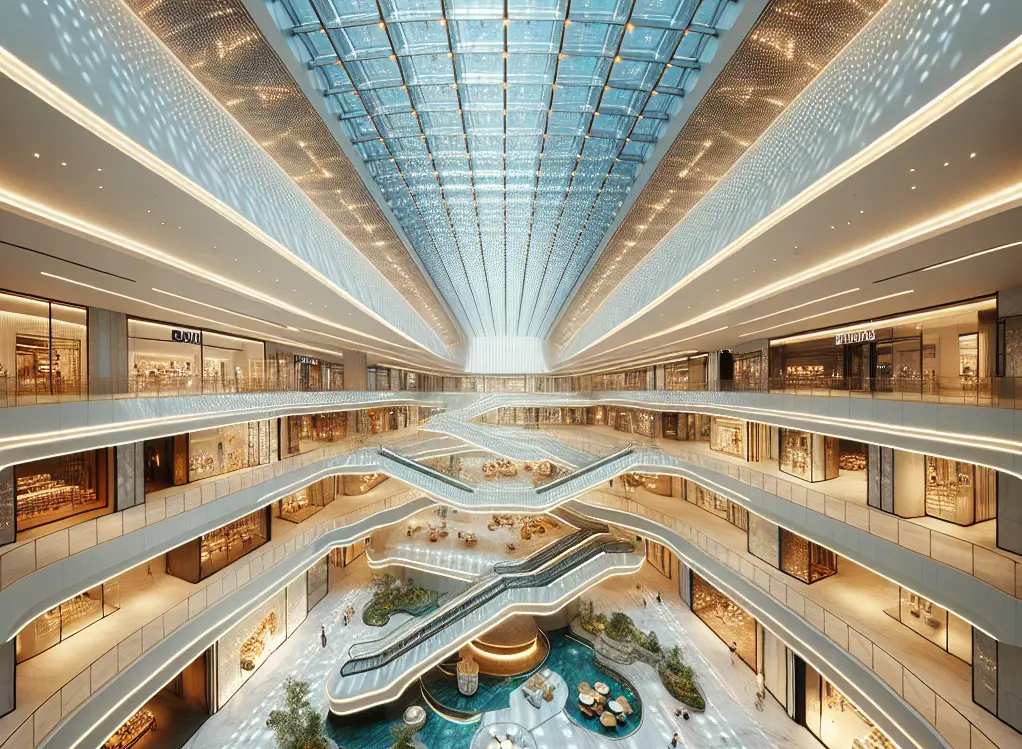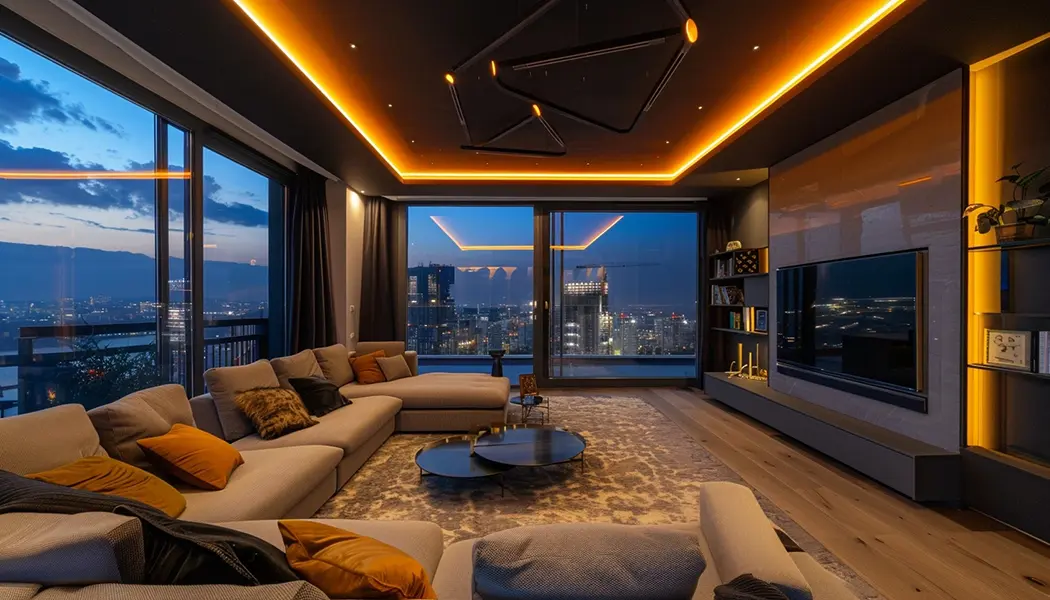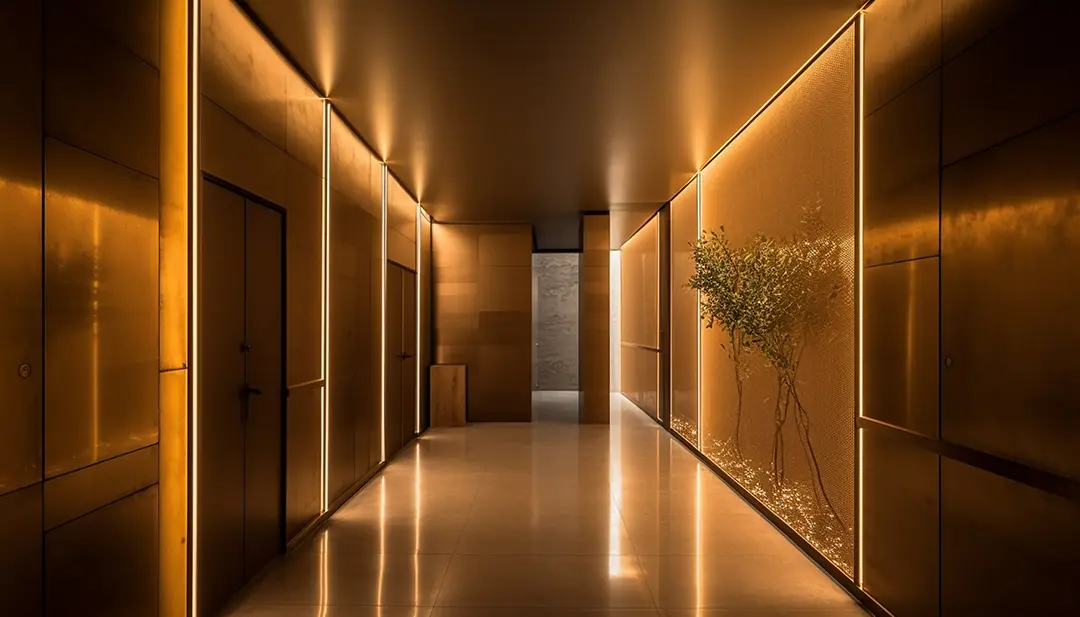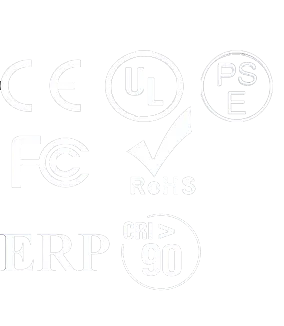
Understanding CRI: Enhancing Your Lighting with Accurate Color Rendering
The Color Rendering Index (CRI) is a crucial metric for assessing a light source’s ability to reproduce the colors of objects accurately. A higher CRI indicates better color rendering capability. Whether in residential, commercial, or professional lighting settings, high-CRI light sources provide more realistic and natural illumination. With the rapid advancements in LED lighting technology, CRI has become a significant parameter for evaluating the quality of LED fixtures. This article will thoroughly explore the fundamentals of CRI, its technical details, market applications, and future trends, showcasing Sunroleds’ expertise and technological advantages in the field of high-CRI LED products.
Table of Contents
What is CRI?
The Color Rendering Index (CRI) is a metric used to evaluate how well a light source reveals the colors of various objects in comparison to a natural light source. Developed by the International Commission on Illumination (CIE), CRI is a scale from 0 to 100 that indicates the light source’s ability to render colors accurately. A CRI of 100 represents the best possible color rendering, similar to natural daylight.
CRI and RA Relationship
The Color Rendering Index (CRI) and Ra (General Color Rendering Index) are closely related concepts, but there are some subtle differences between them. CRI is a broader term used to describe the color rendering performance of a light source, while Ra is a specific representation of CRI.
Ra is actually a specific symbol within the CRI calculation formula, but in practice, it is often used synonymously with general CRI. In other words, Ra represents the average color rendering index value of eight test color samples, R1 to R8. These eight color samples are selected from the Munsell color system and have medium chroma and lightness.
There are some regional differences in the use of CRI and Ra:
1. In the United States, CRI typically refers to general CRI (i.e., Ra, using R1-R8).
2. In China and Europe, CRI is often used to describe extended CRI (using R1-R14).
Note that only R1 to R8 are used, while R9 to R15 are not included in the calculation of Ra

The Importance of CRI
The CRI of LED fixtures is crucial for many application scenarios. High-CRI LED lights can more accurately present the true colors of objects, which is especially important in fields such as retail, art exhibitions, healthcare, and photography. For example:
Retail Shop: customers need to see the true colors of fabrics to make informed choices.
Art and Design: Museums, galleries, and design studios rely on high CRI lighting to ensure that artworks and designs are displayed as intended. Accurate color rendering preserves the integrity of artistic expression and design.
Healthcare and Dentistry: In healthcare settings, accurate color rendering is essential for diagnosing conditions and performing procedures. Dentists, for example, need to see true tooth colors to assess oral health.
Productivity: In work environments such as offices,home and factories, appropriate CRI can reduce eye strain and improve comfort, which in turn enhances productivity.
Home Decor: high-CRI LED fixtures create a more comfortable atmosphere, contributing to a higher quality of life.
How to caculate the CRI?
The measurement process of CRI is relatively complex and involves comparing the tested LED light source with a reference light source of the same correlated color temperature (CCT). During testing, a set of standardized color samples is used, typically including 15 different test colors. These color samples are divided into two groups: R1-R8 and R9-R15. R1-R8 are the basic color samples used for calculating the general color rendering index (Ra), including colors such as light pink, yellow-green, and orange-yellow. R9-R15 are additional color samples, including saturated red, saturated yellow, saturated green, and others. R9 (saturated red) is particularly important for assessing the color rendering performance of LED lights because many LED fixtures perform poorly when displaying red. During the measurement process, the appearance of these color samples under the tested LED light source and the reference light source is compared. The color rendering index for each sample is calculated, and then the average of R1-R8 is taken as the final CRI value.

Interpreting CRI Values
High CRI Values CRI>90: A CRI value close to 100 means that the light source renders colors very accurately.Considered excellent color rendering performance, CRI90+ is suitable for scenarios requiring extremely high color accuracy, such as high-end retail, art exhibitions, and medical diagnostics.
Moderate CRI Values >80: Light with CRI values between 80 and 90 provide good color rendering , suitable for most commercial applications and residential environments.
Normal CRI Values >70: Lighting with CRI Value between 70 and 79, Average color rendering performance, possibly suitable for scenarios where color accuracy is not critical.
Low CRI Values <70: Light sources with CRI values below 70 may distort colors, making them unsuitable for applications requiring accurate color perception.
It is worth noting that, in addition to the general color rendering index (Ra), the R9 value (saturated red) is also an important indicator for evaluating the color rendering performance of LED lights. A high R9 value means that LED lights can better render reds, which is crucial for many applications, such as retail and healthcare.

CRI and Human Vision
Perception: CRI affects how the human eye perceives colors. A light source with high CRI provides a more natural and vibrant color experience, while a low CRI light source can make colors appear dull or unnatural.
CRI requirements in Different industry: Natural daylight has a CRI of 100 and provides the most accurate color rendering. Artificial light sources with lower CRI values may not render colors as vividly, impacting how colors are perceived in various settings.
Visual Comfort: Over time, the human eye adapts to different lighting conditions. However, high CRI lighting can help maintain accurate color perception and reduce visual fatigue.In office environments, using high-CRI lighting can increase employee focus and productivity. In home settings, high-CRI fixtures can create a more comfortable atmosphere and imporve the life.
CRI and Other Lighting Parameters Relationship
When evaluating LED fixtures, CRI is not the only parameter to consider. Other important performance indicators include:
Lumens: Luminous flux describes the total amount of light emitted by an LED fixture, measured in lumens (lm). High-CRI LED fixtures typically maintain high luminous flux, but in some cases, achieving higher CRI may involve sacrificing some light brightness output.
Color Temperature: Measured in Kelvin (K), color temperature describes the warmth or coolness of the light. CRI is independent of color temperature but can impact the perception of color under different temperatures. generally, lower color temperature LED fixtures are more likely to achieve high CRI.
Light Efficacy: Light efficacy describes the efficiency with which an LED fixture converts electrical power into visible light, typically measured in lumens per watt (lm/W). In the past, there was a trade-off between high CRI and high luminous efficacy. However, with technological advancements, it is now possible to achieve high CRI and high light efficacy simultaneously through advanced LED technology and optical design. This not only helps in energy saving but also provides a superior lighting experience
Lifespan: The lifespan of LED fixtures is usually indicated by L70 (the operating time until the light output decreases to 70% of its initial value). High-quality, high-CRI LED fixtures generally also have a longer lifespan.
CRI vs. Other Color Rendering Indices
Ra vs. R9: CRI, also known as Ra, provides an average measure of color rendering across eight colors. R9 is a specific CRI metric that focuses on red hues. High R9 values indicate superior rendering of reds, which is important for applications requiring vibrant red colors.
TM-30-15: This newer color rendering metric developed by the Illuminating Engineering Society (IES) offers a more detailed analysis of color rendering. It evaluates 99 color samples and provides a comprehensive view of how a light source performs across various colors.
Gamut Area Index (GAI): GAI measures the range of colors rendered by a light source. A higher GAI value indicates a wider range of colors, complementing CRI in evaluating color quality.
CRI in Different Applications
Retail Lighting: In retail environments, high-CRI LED Lighting fixtures can accurately display the colors of products, enhancing customer purchase intent. This is especially important for color-sensitive items such as clothing, cosmetics, and food.
Hospitality and Residential Lighting: High CRI lighting in hotels and homes creates a welcoming atmosphere and accurately renders interior colors. It also enhances the overall comfort and visual appeal of living spaces.
Healthcare Facilities: Hospitals and clinics require high CRI lighting for accurate diagnosis and treatment. It ensures that medical professionals can see true colors and perform tasks with precision.
Industrial and Office Lighting: High CRI lighting in work environments reduces eye straini,mprove work efficiency, reduce eye strain, and create a more comfortable working environment.
Photography and Video Production: In studios and television sets, high-CRI LED fixtures ensure that images and videos are captured with accurate colors, reducing the need for post-processing.
Art Exhibitions and Museums: The color presentation of artworks directly affects the viewer’s experience. High-CRI LED fixtures ensure that the colors of artworks are accurately reproduced, preserving their original appearance.

How to choose the Right CRI for Lighting Fixtures?
Understand Application Requirements: Different application scenarios have varying CRI requirements. For example, a CRI of 80+ may be sufficient for general home lighting, while professional photography might require fixtures with a CRI of 90+.
Consider the R9 Value: In addition to the general CRI value, pay attention to the R9 value. A high R9 value indicates better rendering of reds by the LED fixtures.
Balance Other Parameters: While pursuing high CRI, also consider other performance parameters of the fixtures, such as light efficacy, color temperature, and lifespan.
Choose Reputable LED Brands: Renowned LED brands typically have better quality control and more reliable performance data.
Perform Actual Testing: If possible, test the fixtures’ performance in the actual environment before making a final decision.
Consider New Evaluation Methods: If possible, refer to new evaluation methods like TM-30 to obtain more comprehensive information on color rendering performance.
Market Trends and Future Developments
As consumer demand for high-quality lighting increases, high-CRI light sources will become increasingly important in the market. In the future, lighting products will focus more on color rendering performance to meet the needs of various application scenarios.
Advancements in LED Technology: LED technology continues to evolve, leading to improvements in CRI and overall color quality. Emerging technologies, such as quantum dots and phosphor-converted LEDs, are enhancing color rendering and efficiency.
Market Demand for High CRI Lighting: As awareness of color accuracy grows, there is a rising demand for high CRI lighting across various sectors. This trend is driving innovation and increasing the availability of high-quality lighting solutions.
Integration with Smart Lighting: Smart lighting systems with adjustable CRI settings are becoming more popular. These systems allow users to customize color rendering to suit different tasks and preferences.
Sustainability and Energy Efficiency: The push for sustainable lighting solutions is influencing the development of energy-efficient, high-CRI LED products. Manufacturers are focusing on creating products that offer excellent color rendering while minimizing environmental impact.
Sunroleds Solutions
Sunroleds is dedicated to providing high-quality, high-CRI, High efficiency LED Strips and Lighting. Through continuous research and innovation, Sunroleds ensures high color rendering (CRI>90) performance and quality in each product by selecting high-quality LED chips(SDCM<5), optimizing phosphor materials and optical design, and implementing strict quality control measures. So we are confident that All of them are 5 years warranty.
In a large office building project, Sunroleds’ high-CRI LED fixtures significantly improved the lighting quality of the workspace, earning high praise from the client. The LED fixtures used in the project not only provided excellent color rendering performance but also achieved remarkable energy savings.

Conclusion
Understanding CRI is essential for making decisions about lighting in various applications. Whether you are a retailer, end-user, or project manager, knowing how CRI impacts color rendering can help you choose the right lighting solutions to meet your needs. As LED technology advances and demand for high-quality lighting increases, staying informed about CRI and related metrics will ensure that you can select lighting fixtures that offer superior performance and value.
For high-quality LED lighting solutions that meet your CRI and other requirements, consider Sunroleds. Our products are designed to provide excellent color rendering(CRI>90), ensuring that you get the best performance for your lighting applications. Visit Sunroleds.com to explore our range of LED strips and LED lighting fixtures.
Share this article
Written by : Sophia Ng
Hey there! This is Sophia Ng, Worked for Sunroleds with 15 years in the industry, specializing in sales and marketing.
I'm committed to excellence and always aim to exceed expectations. Outside of work, I enjoy traveling and exploring traditional Chinese culture.
Let's connect and make some magic happen!

